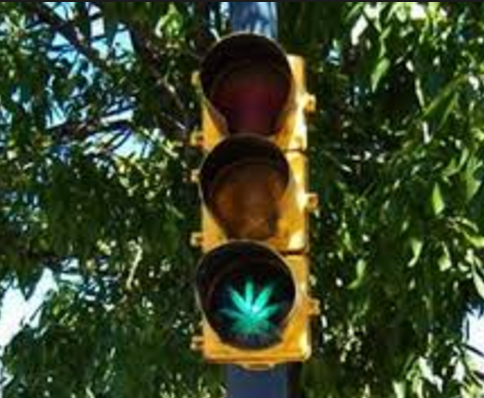Hazards of driving after smoking pot a cautionary tale, or prohibition propaganda?
The controvery over legalization of marijuana takes a traffic safety turn.

CONCORD, NH — Fatal crashes involving drivers who recently used marijuana doubled in Washington state after the drug was legalized, according to research released Tuesday by the AAA Foundation for Traffic Safety.
The organization also cites new research that suggests limits for marijuana and driving are arbitrary and unsupported by science, which could result in unsafe motorists going free and others being wrongfully convicted for impaired driving. Washington was one of the first two states to legalize the recreational use of marijuana. AAA says these findings raise concerns about drug-impaired driving, as at least 20 states consider marijuana legalization this year.
According to AAA, the percentage of drivers involved in fatal crashes who “recently used” marijuana more than doubled from 8 to 17 percent between 2013 and 2014; and 1-in-6 drivers involved in fatal crashes in 2014 had recently used marijuana, which is the most recent data available.
“The significant increase in fatal crashes involving marijuana is alarming,” said Peter Kissinger, President and CEO of the AAA Foundation for Traffic Safety. “Washington serves as an eye-opening case study for what other states may experience with road safety after legalizing the drug.”
Meanwhile, NH NORML Director Erica Golter says the information from AAA is nothing more than propaganda aimed at promoting prohibition.
“Cannabis metabolites stay in your system for at least 30 days. There’s no way to prove that this is in any way directly related. If there is any explanation, because the plant is legal in the state, there may be more people using cannabis or substituting as an adult recreation rather than alcohol,” Golter says. “As we saw in Colorado, fatal car crashes in general went down following legalization. This is just prohibition propaganda and should be dismissed without any solid facts. There is no control study, and there are no facts supporting these claims.”
Marijuana legalization legislation was defeated in Vermont and New Hampshire earlier this year, however Maine voters will go to the voting booth in November and decide whether to support legalization. This year Maine lawmakers also defeated a bill that would have set a arbitrary legal limit for THC at 5 nanograms, the same as in Colorado and Washington, where recreational marijuana use is legal.
For the study, AAA researchers examined the lab results of drivers arrested for impaired driving and concluded the following:
- There is no science showing that drivers reliably become impaired at a specific level of marijuana in the blood. Depending on the individual, drivers with relatively high levels of marijuana in their system might not be impaired, while others with low levels may be unsafe behind the wheel. This finding is very different from alcohol, where it is clear that crash risk increases significantly at higher BAC levels.
- High THC levels may drop below legal thresholds before a test is administered to a suspected impaired driver. The average time to collect blood from a suspected driver is often more than two hours because taking a blood sample typically requires a warrant and transport to a facility. Active THC blood levels may decline significantly and could drop below legal limits during that time.
- Marijuana can affect people differently, making it challenging to develop consistent and fair guidelines. For example, frequent users of marijuana can exhibit persistent levels of the drug long after use, while drug levels can decline more rapidly among occasional users.
“There is understandably a strong desire by both lawmakers and the public to create legal limits for marijuana impairment, in the same manner as we do with alcohol,” said Pat Moody Director of Public Affairs for AAA Northern New England. “In the case of marijuana, this approach is flawed and not supported by scientific research. It’s simply not possible today to determine whether a driver is impaired based solely on the amount of the drug in their body.”
Paul Armentano, National Deputy Director for NORML, says the conclusion by AAA that per se limits for THC and/or carboxy-THC are not evidence-based is consistent with NORML’s long-held position.
“The supposed ‘doubling’ of risk associated with THC-positive drivers is based on a widely publicized but poorly controlled review some years ago in British Medical Journal. Better controlled studies, such as this new review by Rogberg and Elvik find the adjusted odds ratio to be far lower, around 1.3 — less than the elevated risk associated with tuning the radio (1.9) or driving with multiple passengers (2.2),” Armentano said.




